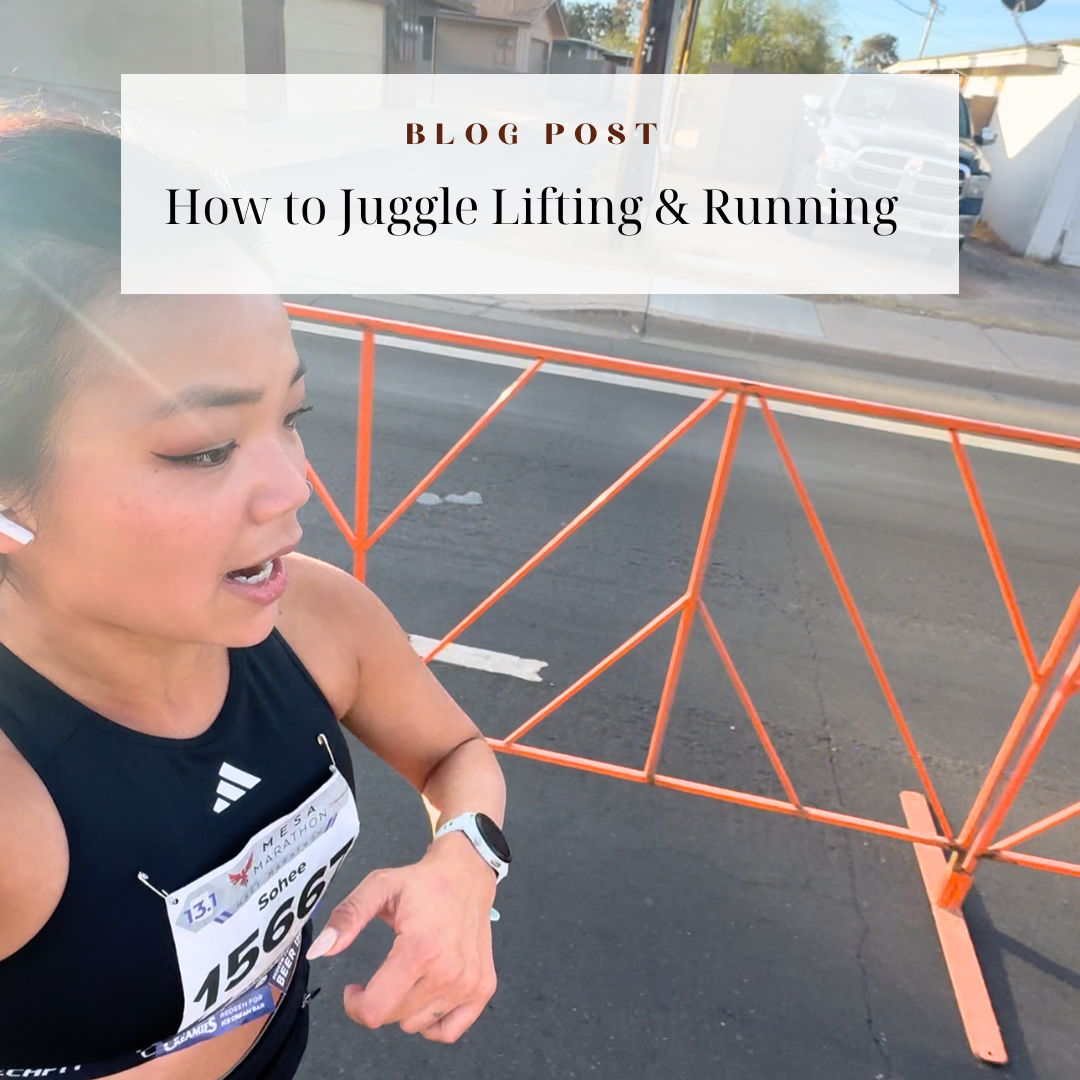Then vs. Now: Learning Lessons from a Bikini Competitor
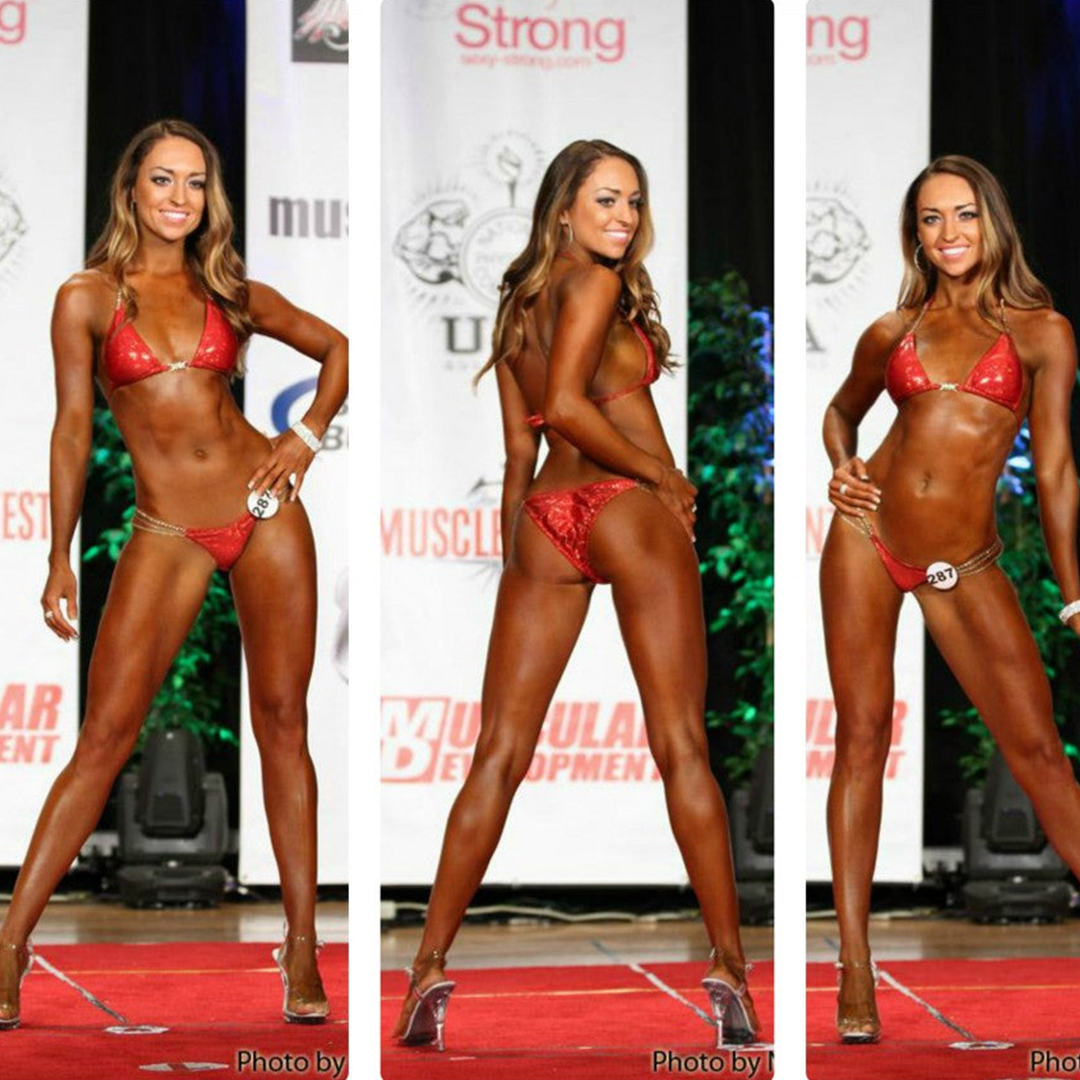
Today’s guest post comes from Stephanie Dorworth, a doctor of physical therapy, pilates instructor, and internationally published fitness model. Together with her husband Zachary, they provide health & fitness tips and coaching on their website www.BeautifultotheCore.com.
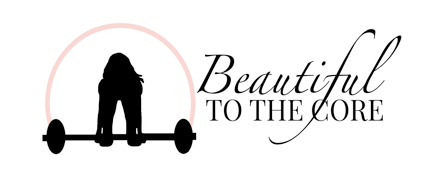
In 2012, I attended a bodybuilding show and I was deeply inspired. The competitors opened my eyes to the fact that competing is a form of art. I left there with a newfound passion and goal in life: to compete in a bikini competition. In 2013, that goal was accomplished. During my prep, however, I struggled to find help and information about competing, so I set out on a journey to offer quality help to fellow competitors.
When it came to signing up for a show, curling my hair, putting on my makeup, getting dazzled with my jewelry, and posing, I was on point! However, when it came to my training, cardio, nutrition, and happiness, things were a little more of a disastrous, hot mess. I prepped my body completely wrong for my show. This was a huge mistake. Due to my ignorance, I was unsuccessful on stage, did not place well, and did not fully enjoy the experience.
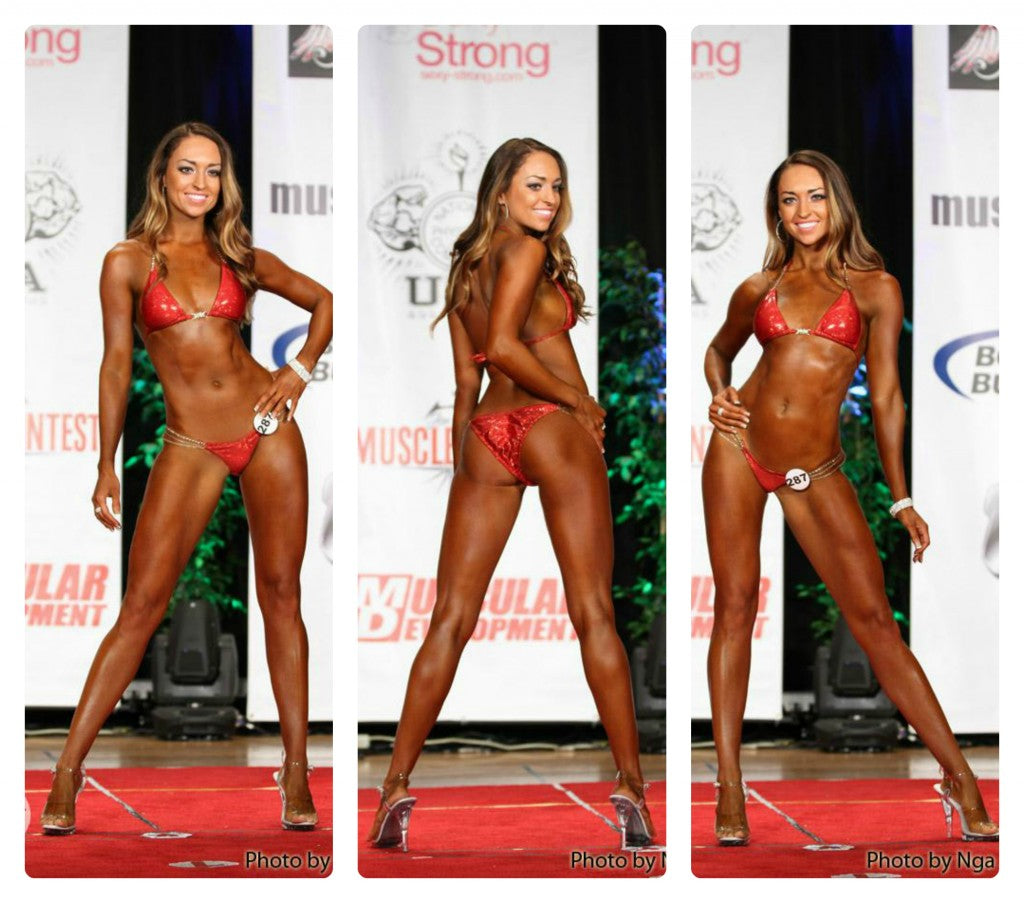
You see, I was trying to do a contest prep on my own. While there is nothing inherently wrong with this approach, I would blindly take in free advice that I had found online and adopted the old school method of prepping for a show. I read about girls who would eat plain chicken and asparagus, do over an hour of cardio each day, never have cheat meals – and they looked great! So I was naive and assumed that that was the way to do go about my own prep. My excitement to compete clouded my judgment on my education and what I knew was right. If only I knew then what I know now, I would have looked much better under those stage lights and had a far more pleasurable experience.
I am sharing my struggles with you today in the hopes that I can prevent you from walking down the wrong path. As I share my story of then vs. now, if you feel you can relate to the old Stephanie and you believe that you are heading down the same road as I was, then please: detour, honey!
Training
Then
Way back when, my workouts were focused on isolation exercises. I did not pay attention to timing and I took little rest breaks between sets. I thought a five-minute bike ride was sufficient warm-up, even for upper body days. I never asked for help, I never asked for a spotter, and I therefore was not improving with my lifting techniques. I was working out with bad form and using momentum to lift and cheat my reps, which is detrimental to your joints, not to mention unproductive and unsafe.
Now
My training has shifted from isolated exercises to heavy, compound exercises like bench press, squats, and deadlifts (though I still incorporate isolated movements toward the end of a workout). I time my rest breaks and focus on the timing of each exercise by putting a longer emphasis on the eccentric over the concentric contraction.
My body has completely transformed as I have gained muscle and trained more effectively and safer. One way to train safer to avoid joint pain is to include active warm-ups, pre-workout dynamic stretching, and post-workout static stretching and foam rolling.
Research shows that static stretching pre-workout may negatively impact performance (1), so instead practice active warm-ups, which are safer and better for performance outcomes (2). Your training should also involve techniques conducive to muscle hypertrophy, such as time under tension (TUT), daily undulating periodization (DUP), and blood flow restriction training (BFR). BFR is shown to be beneficial for increasing strength if used 2-3x/week at less than 50% of your 1RM (3-4).
(See related: Longer Rest, How to Avoid Joint Pain While Lifting, Total Body Stretching Program, Making Gains with a Progressive Active Warm-up, DUP Step, Blood Flow Restriction Training)
CARDIO
Then
Many moons ago, I would spend 20-60+ minutes daily performing steady state cardio with very little variation in speed or intensity. If I missed a session, I would feel anxious and incomplete. Due to my overexercising, however, I experienced frequent joint pain like knee pain, sacroiliac joint point, and shin splints. On top of that, my metabolism took a serious beating.
Now
Excessive steady state cardio promotes muscle breakdown. When it comes to cardio, more is not better; smarter is better. Intensity, not duration, is what elicits results, which is why high-intensity interval training (HIIT) is what I implement now if I desire to lean out for a vacation or photo shoot. Research shows it is a better option for fat loss than jogging because your metabolic rate stays increased for up to 48 hours after your session! HIIT can be performed 1-3x/week for <20 minutes (6). My favorites are bike sprints or deadmills on the treadmill.
(See related: To Cardio or not to Cardio, Beat the Holiday Bulge with HIIT)
NUTRITION
Then
Back in the day, I ate dangerously low calories for my build and activity level, including low carbohydrates. My meals consisted mostly of plain chicken, asparagus, sweet potatoes, almonds, and protein shakes. I therefore had cravings all the time and felt unsatisfied. If I ate a little piece of chocolate, I felt immensely guilty. I did not enjoy my diet and experienced a good deal of anxiety surrounding food.
Now
I am currently reverse dieting and working on increasing my calories above 1,800 per day with a healthy balance of proteins, carbs, and fats. I practice flexible eating, meaning I eat wholesome, nutritious foods 80% of the time and treats 20% of the time. As a result, my cravings are satisfied and I no longer feel the need for “cheat meals”. Very low calories promotes metabolic damage. It may also lead to symptoms like fatigue, hormonal disturbance, poor concentration, and irritability.
Your goal should be to eat as many calories as possible while staying on track to meet your goals. So if it is your off-season, reverse dieting may be an appropriate approach. An excellent source to learn about metabolic damage is Dr. Layne Norton’s videos as well as the e-book Reverse Dieting.
MINDSET
Then
In the old days, I was doing excessive cardio, which made up the majority of my workouts. I did not leave the gym unless I did cardio on a machine or went on a run. Looking back, I don’t know how I made it through those runs while eating such low calories and carbohydrates. I was completely drained! I had low self-esteem and poor confidence and I was extremely unhappy.
When my bikini competition rolled around, then, I was still unsatisfied and even more miserable than before despite having lost body fat. I did not enjoy the contest prep process because I was constantly irritable and tired.
Now
Today, I am much happier and more confident in my body. Who wants to be moody for the rest of their life when there’s a better way to get in shape?
Choose happiness and love your body.
While many women think that attaining a lean physique will bring happiness, it’s unrealistic to stay that stage lean year-round. It’s important, then, to find peace with your off-season body. This is another reason why having other goals, such as shooting for a double bodyweight deadlift, can help you stay motivated and in an optimistic frame of mind. For example, when I hit a new PR at squats, I celebrate! Always challenge yourself and be better each and every day.
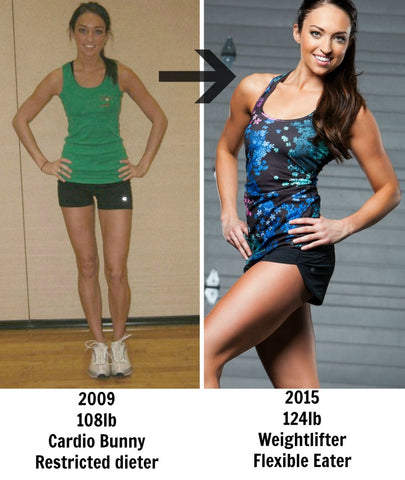
Are You Ready for Contest Prep?
As coaches, my husband Zachary and I are often asked when you know you’re ready to begin contest prep. First and foremost, you should make sure you fall into the “now” category. Then go through our checklist and ensure you meet the criteria below:
- You are experienced in lifting heavy with an emphasis on compound exercises (squats, deadlifts, bench press).
- You are keeping cardio to a minimum.
- You are experienced with tracking macronutrients – meaning that you are capable of consuming foods in the right quantities such that you can meet a prescribed set of macronutrient numbers (grams of protein, carbohydrates, and fats) everyday.
- You have spent a reasonable amount of time out of a caloric deficit.
Training and eating right during off-season will not only enrich your health right now but they will also make future contest preps much easier and healthier.
Let’s go over an example of two women:
- Anna is a young female who wants to take her try at a bikini competition. She comes to us for coaching and is currently 5’4″, 130lb, does not do cardio, and consumes 2,000 calories per day. After looking at her history. we would likely take her on as a client because she appears to have a great metabolism and plenty of room to adjust her macros. So over the course of a 12-week prep, we would be able to slowly adjust macros based on her progress. She would likely be able to drop body fat fairly easily without having to take her prep to the extreme.
- Beth is a young female who also wants to compete and comes to us for coaching. She is currently at 5’5″, 130lb, runs 5+ miles a day, and consumes 1,400 calories per day. We would likely take her on as a client under the condition that we need to implement reverse dieting and wean her off of all the cardio first before we beginning a fat loss phase. If we were to begin a contest prep right away, we would have little room to adjust macros because they are already too low and unable to increase cardio because she already does plenty. We’d have no room to make tweaks to her program, in other words, and as a result, she’d likely obtain suboptimal results in the 12-week span and be disappointed. If she were to agree to set aside her short-term goal and do a reverse diet first, she would ensure better long-term success when it finally came time for contest prep.
Now you can see how important a healthy off-season training and nutrition program is. It is crucial to take charge and make smart choices. You only get one body – take care of it now and invest in your long-term health.
Take a look at some of our contest prep clients who did things the right way. You can, too!
I could not have achieved this goal without your help and guidance during the 12-week journey. I have to be honest, the journey was tough and there were days when I felt like I could not keep going, but I was dedicated and determined to finish it. It was also a very unexpected but delightful surprise that I placed 5th in 2 different bikini classes. There were so many beautiful girls competing and I made many new friends, so I plan to compete again next year. For everyone out there wanting to compete in a bikini competition or if you have just been thinking about it. Beautiful to the Core is your best online resource. Stephanie is amazing and very knowledgeable in every aspect of competing. I’m glad I had her with me each step of the way. I love you!!!! And Beautiful to the Core rocks!
Carrie R., Wake Forest, NC
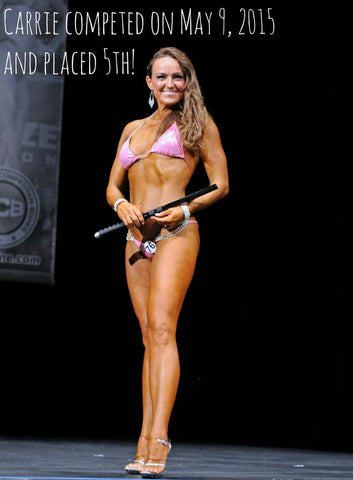
Working with Stephanie using the Beautiful To The Core bikini prep was a great experience. Stephanie was prompt, professional, super pleasant, and always supportive. Not only did her plan get me the body I had been striving to achieve, but Stephanie was there to make adjustments and help me through all the way up until show day.
Terra M., Belmont, NC
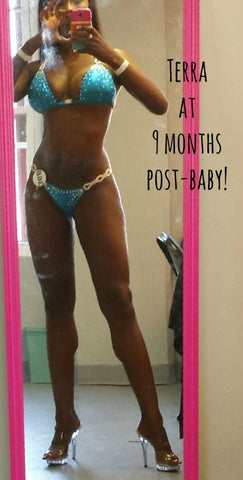
The contest prep process is stressful enough as it is. The information I provide in my latest e-book, Bikini Competition Prep Guide, has helped over a thousand competitor hopefuls to this day. In this product, I share tips on picking a league, choosing a show, typical costs of competing, building a competition suit, shopping for heels and jewelry, hair and makeup, posing tips, and lots more.
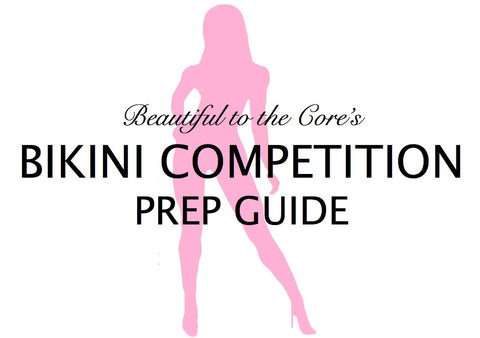
With this program, you also get access to our Facebook community group so you can interact with other ladies who are prepping for a bikini competition and learn from one another.
Again, you can pick up a copy of the e-book at this link.
Stay beautiful,
Stephanie Dorworth
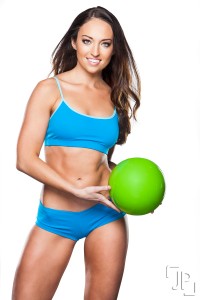
References
- Vetter, R. E. (2007). Effects of six warm-up protocols on sprint and jump performance. Journal of Strength & Conditioning Researhc, 21(3), 819-823.
- Perrier, E. R. Pavol, M. J. Hoffman, M. A. (2011). The acute effects of a warm-up including static or dynamic stretching on countermovement jump height, reaction time, and flexibility. Journal of Strength & Conditioning Research, 25(7), 1925-1931.
- Loenneke, J. P. Wilson, J. M., Marin, P. J., Zourdos, M. C. & Bemben, M. G. (2012c). Low intensity blood flow restriction training: a meta-analysis, 112(5), 1849-59.
- Takarada, Y. Takazawa, H. Sato, Y. Takebayashi, S. Tanaka, Y. Ishii, N. (2000). Effects of resistance exercise combined with moderate vascular occulsion on muscular function in humans, 88(6), 2097-2106.
- Schoenfeld, B. Dawes, J. (2009). High-intensity interval training: applications for general fitness training. Strength & Conditioning Journal, 31(6), 44-46.
- Herodek, K. Simonovic, C. Pavlovic, V. Stankovic, R. (2014). High intensity interval training. Activities in Physical Education and Sport, 4(2), 205-207.

